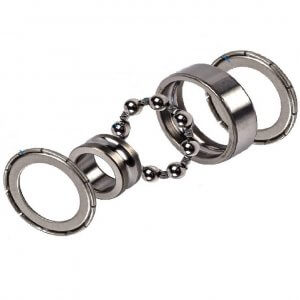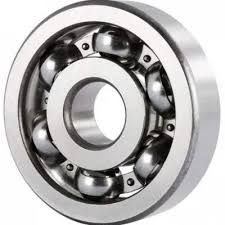May . 06, 2024 15:01 Back to list
How Ball Bearing Works? Tell You the Operating Principle
How Ball Bearing Works? Tell You the Operating Principle
1.What are the functions of each part of the Ball Bearing?
Ball Bearing can be separated into inner ring、outer ring、retainer and balls:
- Inner Ring - It's the rotating element, stuck with the axis, and rotates with the axis.
- Outer Ring - On the outer ring, there's a groove on its inside surface, It's the pathway for the balls;meanwhile, It's also a supporting role.
- Retainer - Separate balls, and avoid balls falling out of the bearing.
- Balls - Separate inner ring and outer ring.
- Lubrication - It can reduce friction and wear, and can also dissipate heat, prevent rust, seal, mitigate shock, etc.

2.How ball bearing works?
Generally, bearings are used to achieve rotational or linear motion and to reduce friction and handling stress. It’s similar to the wheel, the bearing enables the device to roll, which reduces the friction between the bearing surface and its tumbling surface. When friction is reduced, it is very easy to move in a rotational or linear fashion which also increases speed and efficiency.
20*47*14mm 6204-2RS C3 Deep Groove Ball Bearing
To fulfill all these functions
The ball from ball bearings carries the weight of the load - the force of the load weight is the force that drives the bearing to rotate. It typically has two ways of loading, radial loads (Axial loads) and thrust loads, it depends on how is it being used, it probably only has to use one way to work, also it might be two ways at the same time.
Radial loads, as in pulleys
simply put weight on the bearing, causing the bearing to roll or rotate due to tension. Thrust loads are significantly different and stress the bearing in a completely different way.
Thrust load, imaging a bearing (think tire) flips on its side (think tire swing now) and is subjected to full force at that angle (think three kids sitting on a tire swing), this is called a thrust load.
Ball bearing uses at least two rings to transmit the loads, the load is transmitted from the outer ring to the ball, then go through the ball to the inner ring. Most of the time, one ring is stationary and the other is attached to the opposite piece, as long as one of the ring rotates, the other will also rotate.
If you notice, the ball bearing is usually used in applications where the load is relatively small.
Because the ball is a sphere, it only contacts a very small point with the inner ring and outer ring, which helps it works smoothly. On the other hand, if the ball bearing is overloaded, the balls might be broken and even ruin the bearing.
3.How to maintain the Ball Bearing?
- Treat the bearing carefully - Bearing is easy to get damaged.
- Check the bearing housing and shaft - Housing and shaft might affect bearing.
- Install the bearings correctly - Install the bearing in the wrong way, might cause the bearing to get damaged.
- Use the correct tools - Use the correct tools can minimize the risk of damage, and make sure the process goes smoothly.
- Avoid overheating - The bearing might be permanently deformed or soften the bearing steel and resulting in failure.
- Avoid corrosion - It might affect the machine performance and productivity because of the premature failure of the bearings
Latest news
-
Top Spherical Roller Bearing Material Exporter - High-Performance Alloys
NewsAug.27,2025
-
Durable PLC 110-190 Spherical Roller Bearing for Mixer Reducer
NewsAug.26,2025
-
CSK-2RS Sprag Clutch One Way Bearing: Sealed, High Torque, Durable
NewsAug.25,2025
-
CKZ-D Series One Way Overrunning Clutch: Reliable Power Control
NewsAug.24,2025
-
203KRR3 Round Bore Series Bearings | Cylindrical Outer Ring, Precision
NewsAug.23,2025
-
Top Spherical Roller Bearing Material Exporter - High Performance
NewsAug.22,2025
